
Transcription
Conference Calls Made EasyPresentation to theAssociation for Project Management (APM)Annual ConferenceOctober 2008by Dr Penny Pullan
Conference Calls Made Easy – APM Conference Presentation[START RECORDING]Penny Pullan: My name is Penny Pullan. I suppose I got into working on remoteprojects in 2000. I was working on European projects at the time. Can you all hear meor do I need to lurk behind the lectern? No? Okay. I was working on European projects:think three different cities in one week - rushing all around the place like a headlesschicken! But projects were happening; there were lots of face to face meetings withstakeholders and project teams.All of a sudden, the part of the organization that I was in went global. We all had to workglobally. We had big, worldwide projects coming along, such as globalising businessprocesses and implementing SAP. One of the senior managers picked me out and said,“Penny, we know you’re interested in making projects work and getting groups working.We need to know how to do this remotely. We’re not going to be able to do three cities aweek when it’s Singapore, Sydney and New York, and we live in the UK. We need tothink about how to make this work.” So I spent about a month finding out what workedalready - looking outside and bringing recommendations together.But then September the 11th happened. Travel was cut completely. Do you rememberthat? International air travel just seemed to stop. And we needed to use all of the toolsI’d discovered. We found some things worked and there were some things we neededto tweak. Gradually we got quite used to doing global projects. Conference calls werekey. Video conferences are fine, but, if you have to get up in the middle of the nightbecause it’s your turn to be up, you don’t want to drive to the office and sit in a coldvideo conference suite. Actually, just picking up the phone and talking in your pajamasis actually a lot better! The alternative is to use webinars. But if you have firewalls anddifferent companies involved, it can get very complicated.So that was how I started working on global projects. A couple of years later, a directorasked me to run a global programme with the UN, governments in West Africa andcompanies across the confectionery industry. It was focused on improving child labouron cocoa farms. Because the team included people from all over the world, the work 2008 Penny PullanMaking Projects WorkPage 2 of 14
Conference Calls Made Easy – APM Conference Presentationwas done predominantly by conference call; certainly once we had got to know eachother. So this can work. There are things that I have learned, which I would like to sharewith you today.I now work as an independent. I own a consultancy: Making Projects Work Ltd. Earlierthis year, I experienced a flood of project managers saying to me, “What can we doabout remote working? Conference calls are not working for us.” So I surveyed pwww.conferencecallsmadeeasy.com, because conference calls can be an awful loteasier and more effective than they usually are at.First of all, why does it matter? There are many reasons why it matters. But right now, itis the time when I invite you to stand up: Stand up please (if you can). If you take part inconference calls at all, say, at least one a year, please stay standing. Anybody else,please sit down. [One or two people few sit down.] If you take part in conference callsfor less than one a week please sit down. Less than one a week. So you sometimes doconference calls. [About half the audience sits down.] Okay. If you do five conferencecalls a week or more, please stay standing. Everybody else, please sit down. [All buttwo sit down.] Okay. Now, I’ve found project managers who do 10, 11 or 12. May I askyou how many calls a week you attend on average?Participant: Probably half a dozen.Penny Pullan:Half a dozen. Thank you very much. Please sit down. Thepharmaceutical industry seems to be one where they have 11, 12 or more conferencecalls a week. It matters, doesn’t it?There’s the cost of physical travel, not to mention all that time taken. What about thesalary and benefits that your company is paying while you’re just sitting on anaeroplane? What about the drain, the hassle and the stress of travelling to travel tomeetings, and the effect on the environment? So how sustainable is travelling? We 2008 Penny PullanMaking Projects WorkPage 3 of 14
Conference Calls Made Easy – APM Conference Presentationknow it’s not, especially not three cities a week, with lots of people travelling around allthe time. It certainly doesn’t help your work-life balance to be sitting in a room like thislate on a Friday evening when you’re about to fly long haul:Just one example: one of my new clients is spending thousands of pounds every singleday just sending people to India to get their projects engineers to work on their remoteprojects. They haven’t been able to make conference calls work well as yet. So they arespending a fortune. But you may be sitting there thinking, “Well I don’t fly, so I’m okay.”But actually, how sustainable is this – travelling to meetings all the time by car?We need to look at different ways of working. 2008 Penny PullanMaking Projects WorkPage 4 of 14
Conference Calls Made Easy – APM Conference PresentationOn the other hand, looking at conference calls, how sustainable is falling asleep on yourcomputer? When you’ve got somebody this disengaged from what’s happening, and uplate at night, despite their cup of coffee? In this picture, the poor lady has gone to sleep:And just in case you think it’s only lady project managers that disengage in this way,here’s a picture of a male project manager for you:So conference calls look like a really good solution, but there are some issues.How many issues are there, I thought? I came up with quite a few on my own. I thoughtthat, rather than just using my own experience, it would be good to talk to projectmanagers and see what they thought. So I surveyed people. The survey is still out thereif you would like to take part. The survey is at:http://spreadsheets.google.com/viewform?key pec1X-r7WFgK6kGn10T6ZVw&email trueMy survey came back with nearly 101 issues! Here they are: 2008 Penny PullanMaking Projects WorkPage 5 of 14
Conference Calls Made Easy – APM Conference PresentationYou’ve can see them all up there. There’s a plethora of issues out there with conferencecalls. But the good news is that all of these issues have solutions. Unfortunately, in thelimited time we’ve got today, I’m not going to be able to cover them all. But I will comeback in a short while to open this talk up to you; you’ll be able to ask about your issuesthat you’d like ideas for solving.So there are lots and lots of issues. I think is really important is to think about how canwe really get things done. There are twelve crucial questions to ask well before you’regoing to have a remote meeting, a conference call or a video conference. Why crucial?Because these will give you clues as to whether or not you’re likely to succeed. Thereare so many different variables at play when you’re meeting people in a remote way.Let’s look at some of them.1. Is success absolutely critical for this meeting? If we don’t meet our objectivesthis time, we have a lot to lose.The first crucial question is, “Is success absolutely critical for your meeting?” So, if youhave the meeting and you don’t meet your objectives, you have an awful lot to lose. And 2008 Penny PullanMaking Projects WorkPage 6 of 14
Conference Calls Made Easy – APM Conference Presentationhere I mean loosing big things: e.g. your company is likely to go out of business if youdon’t succeed. If the impact of not being successful is enormous, you probably want tothink about meeting face to face.2. Do we need to achieve our goals urgently? Time is really of the essence. Anydelay is unacceptableNumber 2 tackles this myth: “A conference call will help us get something sorted veryquickly.” The issue with conference calls is that you can only really work very effectivelyfor short amounts of time – maybe one hour or one and a half. Whereas, if you can getpeople together face to face, you can spend two or three days in a room and get thingssorted quickly. If you want to do the same work in a conference call, and you want to beeffective, you want to look at doing a maximum of one and a half hours at a time. Thismight mean two sessions a day for a few weeks, as opposed to a few days.3. Is it critical that we share a very high level of trust among team members?So, the question here is, “Is it critical to achieve what you need to do in this remotemeeting?” For this you need to share a very high level of trust, because trust andcommitment lie beneath actions happening. If there isn’t trust, or not enough trust, is itworth going ahead with the remote meeting? Will you actually achieve your objective?4. Will our meeting need really in-depth conversations so we can take wellinformed decisions and reach agreement?In your meeting, do you need to have a lot of really in depth conversations? Do you 2008 Penny PullanMaking Projects WorkPage 7 of 14
Conference Calls Made Easy – APM Conference Presentationneed to grapple with a lot of difficult issues? These sorts of things really do work betterface to face.5. Are we likely to have difficult discussions, which may cause conflict or evokestrong emotions?Are there going to be very difficult discussions? Like that man up there? If you had himon the other end of the phone on the other side of the world, you wouldn’t have a hopeof dealing with him properly in a group conference call. Here, a one to one call or face toface meeting is required to sort his issues out.6. Do we really need to tap into everyone’s enthusiasm and energy to achieve ourgoals?Do you really need to tap into people’s enthusiasm and energy? This person is not veryengaged. There are ways that you can deal with this and make people more engaged,but, if your meeting is really crucial, think about this carefully. 2008 Penny PullanMaking Projects WorkPage 8 of 14
Conference Calls Made Easy – APM Conference Presentation7. Will our meeting be mostly creative brainstorming and problem solving?The environment, when you need to be creative, is quite crucial. Being on a phone isn’tnecessarily the best place to do brainstorming and creativity. So aspects such as thevisioning part of a program or project is probably best done face to face, where you canbuild up the trust and get to know people. Whereas, later on, when you’re reviewinghow things have gone and meetings are more predictable, calls are much easier andwork better.8. Will splitting our meeting into a series of short chunks (1 – 1.5 hours) ruin it?People keep trying to do conference calls that last a long time. I’ve heard of peoplehaving to dial in to a face to face meeting so they had to sit on the phone all day! Itreally doesn’t work. It’s not effective. If you want people to be engaged and involved,you need to keep the conference calls down to an hour, to an hour and a half maximum.It might be that you’ve got a big meeting. In this case, chopping it up might causeproblems for you.9. Will we have to challenge assumptions, clarify expectations and testunderstanding to succeed?Do you need to do a lot of challenging different people’s assumptions, bringingassumptions out, checking expectations, testing understanding and so on? Is that goingto form a major part of your meeting?10. Do we represent a variety of cultures and time zones?You might notice the person in England there (yes it’s me!) This is a whole group offacilitators who looked at how to make remote working more effective. We wereresearching the use of story (narrative forms) as opposed to just stating things veryblandly, and investigating whether that would be more engaging and effective. 2008 Penny PullanMaking Projects WorkPage 9 of 14
Conference Calls Made Easy – APM Conference PresentationYou can see that we drew up a map of where we were based, all around the world. Thisis a very helpful way of keeping in mind all the people on the call. Unfortunately, two ofus, me in the UK and John in the Netherlands, had to be on the calls very late at night.So we were almost falling asleep at eleven (or twelve!) o’clock at night whilst the peoplein Asia and Australia were getting up and having their breakfast. So, when you have amixture of cultures and a mixture of time zones, it does make it a bit more difficult. Youneed to think about how you’re going to handle that.11. Do some of us have less access to or comfort with conference calltechnology?Don’t laugh! There are some people who find coping with conference call technology,typing in codes and hashes and so on, rather complicated. If you add in videoconferencing or webinars, you just multiply the issues. If there are people who are goingto be in your meeting who have issues, sort them out beforehand. Give them supportand training if necessary.12. Are the costs of failing to achieve our objectives far higher that the costs ofbringing all of us together face to face?This is related to the first question. What are the costs if we don’t meet our objectives?And are they much bigger than all the costs of bringing people together face to face?If all the answers to all those questions are yes, just forget it. Don’t use a conferencecall. Meet face to face.However, you may well find that some of the answers are yes and others are no. And ifone or two of those answers are yes, those are the things to focus on and you may wellbe able to go ahead and have your call. But remember that calls can work really well 2008 Penny PullanMaking Projects WorkPage 10 of 14
Conference Calls Made Easy – APM Conference Presentationsometimes and in other situations they don’t work well at all. Now you’re warned!Now I’m saying: “Over to you!” There are so many different issues. Rather than pickinga few at random, I would much rather find out which ones are important to you andanswer those. So, who would like to ask a question on one of these issues with remotemeetings?Participant: In a face to face meeting, it’s fairly easy to see where peoples’ attention isgoing and a video conference call, the same thing happens. But I feel really in aconference call, people go away from the point, all the time.Penny Pullan: So you are asking about when people go away from the point? Okaymentally go away from the point. Okay. One thing that I think is quite important is tostructure your calls and have a facilitator – somebody who actually has the role offacilitating the call and making sure that you stick to the point. So something that I dowhen I have face to face meetings is this: I have a poster like this up on the wall, [it’sour meeting start up template.] What are we here to do? We’re going to focus on reallyeffective conference calls. And that’s the point. In my face to face meetings I might givepeople coloured cards. And if I or anybody else starts drifting off the point, people canlift up a yellow card. But in a conference call you can’t see those signs.So one thing, have a facilitator, nominate a facilitator role. Discuss at the beginning ofthe call what the point is.I have some cards with all of these points that actually you could take if you like as yougo. [People reading this afterwards can receive a card through the post by signing up ?tabid 966 ] Go through all of thosepoints at the start of your call. Make sure everybody is clear on what the point is. By thepoint I don’t mean a long paragraph. It’s probably four to ten words, covering ‘what arewe trying to do’. So the facilitator needs to be the person who is charged to achievethat. Their whole role is to keep the meeting to that point and to make sure that theobjectives are achieved. Okay, thank you. 2008 Penny PullanMaking Projects WorkPage 11 of 14
Conference Calls Made Easy – APM Conference PresentationParticipant: I would like to relate the conference call message you’ve got to the projectlife cycle. Where do you think it’s appropriate to use conference calls in doing projects?Because they seem quite general points that you’ve made today.Penny Pullan: Yes, very good question. So how does this relate to the project lifecycle? I have known people who have done the very start of a project by conference call- the visioning part where you’re setting everything all up, where you’re dealing with anawful lot of uncertainty up front. I would say that’s the best part of your project to getpeople together face to face because you have so much uncertainty and you haven’t yetbuilt up much trust and commitment. By having time together face to face up front, lateron, you can actually use conference calls really effectively because you already knoweach other. You have trust and commitment. You know what people’s voices sound like.And you know a little bit more about their characters. So things like lessons learned,review meetings. Once you’ve got the top level risks, they work too: going through,checking our risks, how are we going, have more been identified? and so on. Those sortof meetings work very well.In extremis, if you have no way of travelling, you can do the lot remotely, but it is muchharder and you need to think very carefully. How can we build relationships? Maybe weneed to get people to work together and have a lot of one to one telephone calls and getto know each other if we can’t meet face to face.Participant:The organization I work with has been a big proponent of usingteleconferences for probably far too long. And I spend days in teleconferences. Lovelyexperience! But I think we have a problem with teleconferences: you don’t actually seethe person. And at the moment I don’t think there’s a viable video conferencing onwebcam option out there. Certainly large organizations can engage provide videoequipment and services. However, there’s nothing out there in the market that allowsthat lightweight visual interaction I think. That’s part of the problem especially as thereare more and more consultancies working with smaller companies especially in thiscredit crunch as well. There’s nothing viable out there certainly in what we’ve seen. And 2008 Penny PullanMaking Projects WorkPage 12 of 14
Conference Calls Made Easy – APM Conference Presentationalso small companies tend not to have facilities or even the money to start to engagethis video conferencing service.Penny Pullan: It’s interesting. Actually I would say video conferencing isn’t necessarilythe answer because, although you can see people, it’s not the same. Initially in the bigcompany I was working in, we all started using video conferencing. However, wegradually fell back to conference calls because they’re so much easier to set up. Youcan be in a car or at home. You don’t have to be stuck at a screen in the office! Sothat’s one thing. But you do need to introduce some sort of visual stimulus. It doesn’thave to be a real-time video of people’s faces. It could be photographs of everybody’sfaces like the one I showed you a little while ago.Participant: I had that same experience with a colleague in the States. For somereason I assumed this person was a gung-ho Texan. It turned out that he was from NewEngland and had never touched a gun in this life!Penny Pullan: At one point, we had cartoons made of the various different people inthe team. So how can you actually bring these remote people to life? They’redisembodied voices on the phone. How can we actually give them some way even if it’snot their current video picture, how can we embody them some way? And it’s easy: ifyou have photographs of people, you can look at the picture as you’re speaking tothem. I found that very helpful.One more question.Participant: We are quite new to conference calling. And my husband is very used todoing them. And it works quite well for him. I find it very hard because people turn uplate. A lot of times, they can’t find the code. And it all interrupts because people get inlate, have to go early, are not very disciplined. Is there a way you can educate quitequickly in conference calling? 2008 Penny PullanMaking Projects WorkPage 13 of 14
Conference Calls Made Easy – APM Conference PresentationPenny Pullan:Well, that’s something my company does, educating people whohaven’t used calls much before as well as improving the effectiveness of calls for peoplewho do ten calls a week.You’re describing various different issues: you’ve got people not turning up on time andpeople leaving late and not knowing the code and so on. I have just one key thing foryou. One of my clients, in a major utility, said to me, “We never realized you have totake conference calls more seriously than other meetings. We all assume you can justpick the phone up.” But no. It’s not like that.Preparation is much more important than a normal meeting. What you do during themeeting to keep people engaged and to keep it effective is much more important than anormal meeting. Because, if you have people drifting off to their email, you’ve lost themfor good. What you do afterwards to make sure actions happen again is even moreimportant. So it’s not the easy option that many people assume it must be. You can’tjust relax and do everything very informally.Participant: Thank you very much.Penny Pullan:There are a couple of things as you go out. If you like, there’s areminder of this card graphically or text, of all of the things to think about at thebeginning.[END RECORDING 25.50]The 12 crucial questions were developed from a checklist developed jointly with NancySettle-Murphy of Guided Insights Inc. in the USA.For a free master class and a special checklist based on these questions, as well asfurther support for Conference Calls Made Easy, sign up atwww.conferencecallsmadeeasy.com.If you would like to receive our meeting start up card sent to your door, please sign uphere: abid 966 2008 Penny PullanMaking Projects WorkPage 14 of 14
conference calls at all, say, at least one a year, please stay standing. Anybody else, please sit down. [One or two people few sit down.] If you take part in conference calls for less than one a week please sit down. Less than one a week. So you sometimes do conference calls. [About half the audience sits down.] Okay. If you do five conference
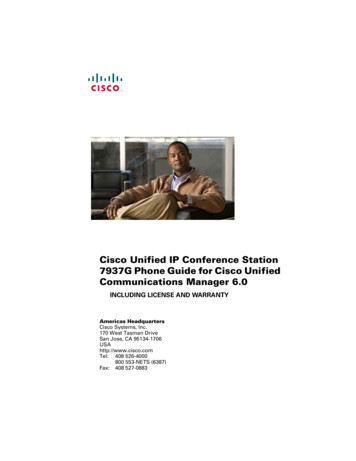
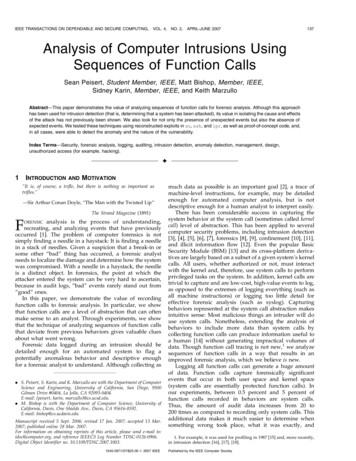
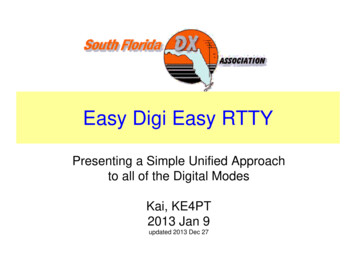
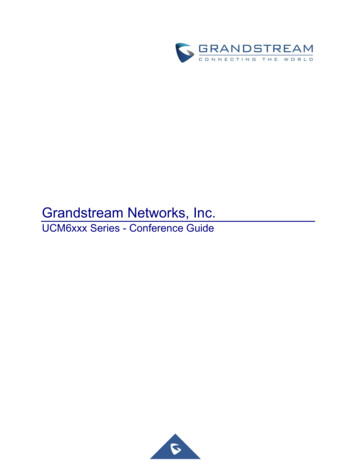
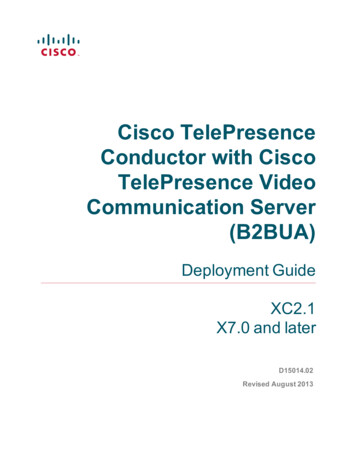
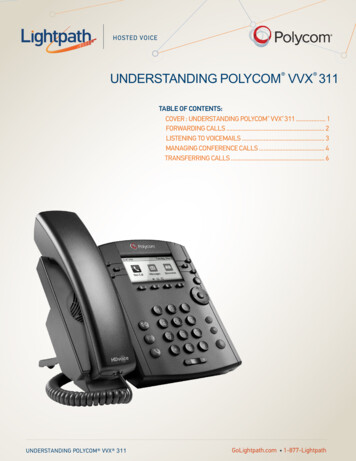
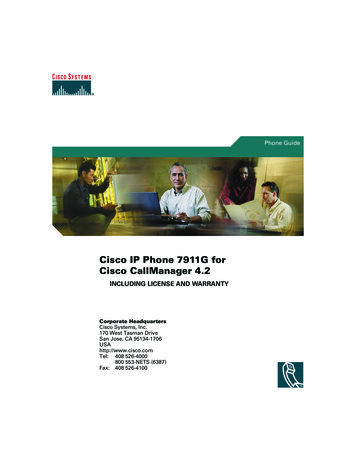

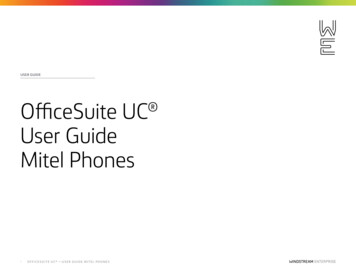

![[SURVEY PREVIEW MODE] DLIS SURVEY - fao](/img/19/dlis-questionnaire.jpg)